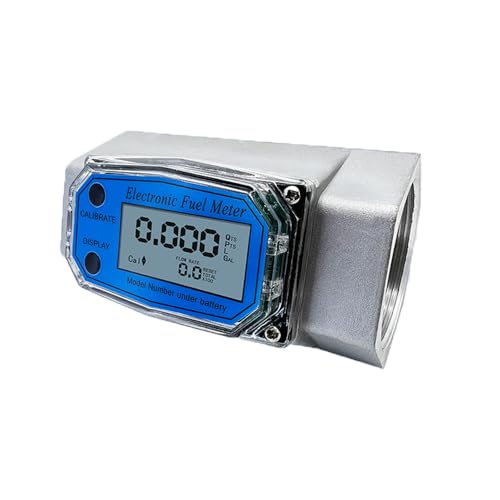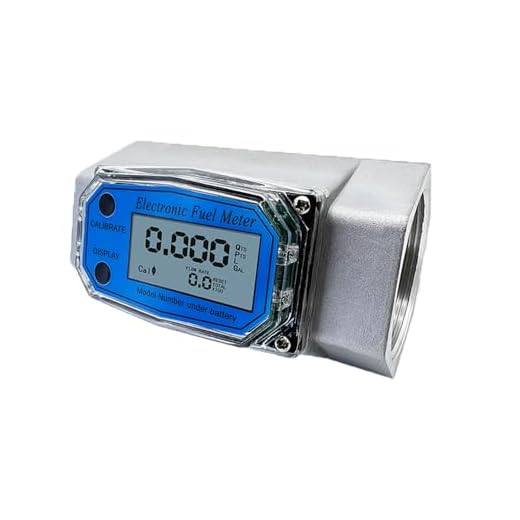
A wedge flow meter is a type of differential pressure flow meter that is commonly used to measure the flow rate of liquids, gases, and steam in a wide range of industries. It works on the principle of creating a differential pressure across a wedge-shaped obstruction placed in the flow path.
The wedge-shaped obstruction, also known as a wedge, is placed in the flow path of the fluid. As the fluid flows through the meter, it encounters the wedge, causing the flow to converge and accelerate as it passes through the narrowest point. This creates a decrease in pressure known as the low-pressure zone.
On the other side of the wedge, the flow diverges and decelerates, causing an increase in pressure known as the high-pressure zone. By measuring the difference in pressure between the two zones, the flow rate of the fluid can be accurately determined.
Wedge flow meters are highly effective in measuring high-velocity flows and can handle a wide range of fluids, including those with high viscosity and corrosive properties. They are particularly suited for applications where the flow rate needs to be accurately measured and controlled, such as in the oil and gas, chemical, and power generation industries.
What is a Wedge Flow Meter?
A wedge flow meter is a type of differential pressure flow meter that is used to measure the flow rate of liquids in a piping system. It consists of a specially designed wedge-shaped obstruction positioned in the flow of the liquid.
The wedge-shaped obstruction creates a differential pressure as the liquid flows around it. This differential pressure is measured by two pressure sensors located upstream and downstream of the wedge. The pressure difference between the two sensors is proportional to the flow rate of the liquid.
Wedge flow meters are commonly used in applications where accurate and reliable flow measurement is required. They are particularly suitable for measuring the flow rate of liquids with high viscosity, such as crude oil and heavy petroleum products.
Working Principle
The working principle of a wedge flow meter is based on the Bernoulli’s principle, which states that as the velocity of a fluid increases, its pressure decreases. When the liquid flows around the wedge-shaped obstruction, its velocity increases, leading to a decrease in pressure.
This pressure drop across the wedge is measured by the two pressure sensors. The upstream sensor measures the pressure before the wedge, while the downstream sensor measures the pressure after the wedge. The difference in pressure between the two sensors is proportional to the flow rate of the liquid.
By using known properties of the liquid (such as its density and viscosity), the flow rate can be calculated based on the pressure difference measured by the sensors.
Advantages of Wedge Flow Meters
Wedge flow meters offer several advantages over other types of flow meters:
- Accurate and reliable flow measurement
- Wide rangeability, able to measure both low and high flow rates
- Minimal pressure loss
- Low maintenance requirements
- Suitable for a wide range of liquid viscosities
These advantages make wedge flow meters a popular choice in various industries, including oil and gas, chemical, and water treatment.
Overall, the wedge flow meter is a versatile and efficient device for measuring the flow rate of liquids in a piping system. Its unique design and working principle make it an ideal choice for applications where accuracy and reliability are crucial.
Principle of Operation of Wedge Flow Meter
A wedge flow meter is a type of differential pressure flow meter that is used to measure the flow rate of liquids, gases, or steam in pipes. It operates based on the principle of creating a pressure drop across a constriction in the flow path, known as the wedge.
When fluid flows through the wedge flow meter, it encounters the wedge, which is positioned in the flow path. The wedge is shaped in such a way that it creates a constriction, causing the fluid to accelerate as it passes through. As a result, a pressure drop is produced across the wedge.
The pressure drop across the wedge can be measured using a differential pressure transmitter, which consists of two pressure sensing points located upstream and downstream of the wedge. The difference in pressure between these two points is proportional to the flow rate of the fluid.
The measurement principle of the wedge flow meter is based on Bernoulli’s equation, which states that the total energy of a fluid flowing through a constriction is conserved as the fluid accelerates. This conservation of energy is reflected in the pressure drop across the wedge.
Advantages of Wedge Flow Meter:
- Wide application range for different types of fluids
- Simple installation and maintenance
- Accurate measurement with high repeatability
- Minimal pressure loss
- Ability to handle high flow rates and pressure
Disadvantages of Wedge Flow Meter:
- Limited turndown ratio
- Dependence on fluid properties for accurate measurement
- Requires calibration for specific fluid applications
In conclusion, the principle of operation of a wedge flow meter involves creating a pressure drop across a constriction in the flow path, known as the wedge. This pressure drop is measured and used to determine the flow rate of the fluid. Wedge flow meters offer advantages such as wide application range and accurate measurement, but also have limitations such as limited turndown ratio and the need for calibration.
Advantages of Wedge Flow Meter
1. Accurate Measurement: One of the major advantages of a wedge flow meter is its ability to provide accurate measurements. It uses the principle of differential pressure to determine the flow rate of a fluid, ensuring precise and reliable readings.
2. Wide Range of Applications: Wedge flow meters are versatile and can be used in various industries and applications. They can handle different types of liquids and gases, making them suitable for a wide range of processes.
3. Low Maintenance: Wedge flow meters have a simple design and do not have any moving parts, resulting in low maintenance requirements. This reduces the risk of mechanical failure and reduces overall maintenance costs.
4. Pressure Drop: Wedge flow meters have a relatively low pressure drop compared to other flow measurement devices. This means that they have minimal impact on the flow characteristics of the fluid, resulting in less energy loss and improved system efficiency.
5. Cost-Effective: Due to their simple design and low maintenance requirements, wedge flow meters are cost-effective options for flow measurement. They offer accurate readings and long-term reliability without the need for costly repairs or frequent calibrations.
6. Easy Installation: Wedge flow meters are easy to install and can be retrofitted into existing systems with minimal disruption. They typically have flanged connections, making it easy to connect them to pipes or other equipment.
7. Suitable for Different Pipe Sizes: Wedge flow meters are available in different sizes to accommodate various pipe diameters. This makes them suitable for a wide range of pipe sizes, allowing for flexibility in system design and installation.
8. Non-Intrusive Measurement: Unlike some other flow measurement techniques, wedge flow meters do not need to directly contact the fluid. This non-intrusive measurement method minimizes the risk of contamination and ensures the integrity of the fluid being measured.
9. Real-Time Monitoring: Wedge flow meters can provide real-time flow rate measurements, allowing for continuous monitoring of fluid flow. This real-time data can be used for process control, troubleshooting, and optimizing system performance.
10. Long Service Life: Thanks to their durable construction and low maintenance requirements, wedge flow meters can have a long service life. This means that they can provide accurate flow measurements for many years, making them a reliable choice for long-term operations.
Applications of Wedge Flow Meter
The wedge flow meter is a versatile device that finds applications in various industries due to its accurate and reliable flow measurement capabilities. Some of the common applications of the wedge flow meter include:
1. Oil and Gas Industry
In the oil and gas industry, wedge flow meters are used for measuring the flow rates of different fluids, including crude oil, natural gas, and refined petroleum products. These meters are commonly installed in pipelines, refineries, and distribution terminals to ensure accurate measurement and control of fluid flow.
By accurately measuring the flow rate, wedge flow meters help optimize production and ensure efficient operations in oil and gas exploration, drilling, production, and transportation processes.
2. Chemical Industry
The chemical industry heavily relies on precise flow measurement for various processes, such as mixing, blending, and batching. Wedge flow meters are widely used in chemical plants to measure the flow rates of chemicals and solvents.
These meters provide accurate measurements, which are crucial for maintaining the right proportions of chemicals and ensuring consistent quality in the production of chemicals, polymers, and other chemical products.
3. Water and Wastewater Treatment
Wedge flow meters are also employed in water and wastewater treatment facilities to measure the flow rates of liquids, including drinking water, sewage, and industrial wastewater. These meters help monitor the flow rates, identify potential leaks, and ensure efficient operation of the treatment processes.
Accurate flow measurement with wedge flow meters is essential for optimizing the treatment processes, maintaining compliance with regulatory standards, and conserving water resources.
4. Food and Beverage Industry
In the food and beverage industry, wedge flow meters play a vital role in measuring the flow rates of liquids, such as milk, juice, beer, and other beverages. These meters are commonly used in production plants, breweries, and beverage bottling facilities.
Accurate flow measurement is crucial for maintaining consistency in product quality, meeting production targets, and minimizing waste in food and beverage production processes.
| Industry | Applications |
|---|---|
| Oil and Gas | Crude oil, natural gas, refined petroleum products |
| Chemical | Chemicals, solvents |
| Water and Wastewater Treatment | Drinking water, sewage, industrial wastewater |
| Food and Beverage | Milk, juice, beer, other beverages |







